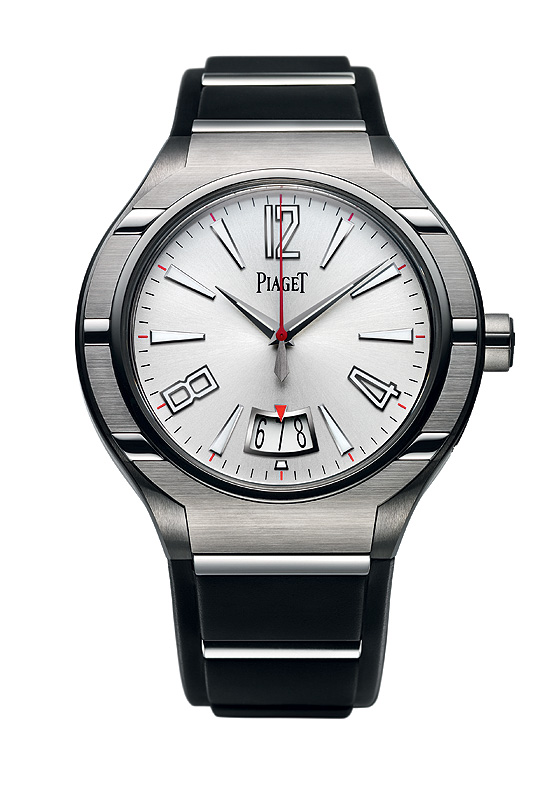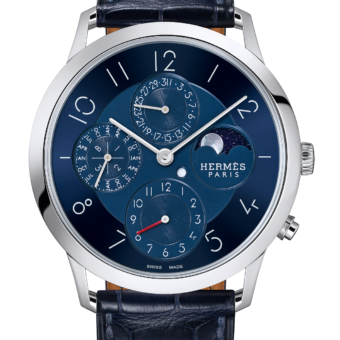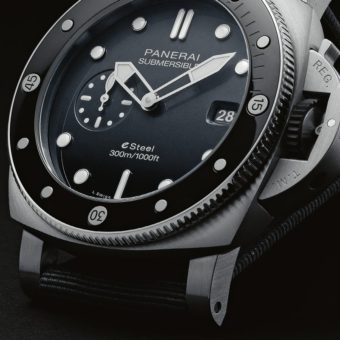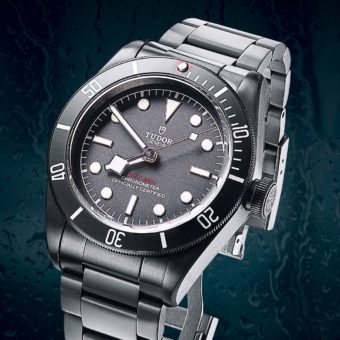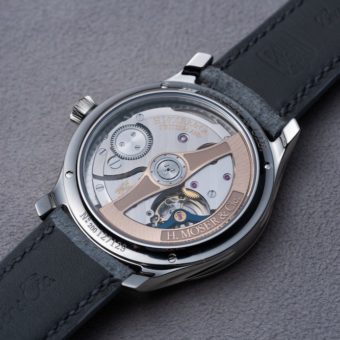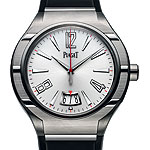 The Piaget Polo, one of the most famous sports watches of the 1970s, has been retooled with a giant titanium-and-steel case and an automatic movement. In this watch-test feature from our October 2009 issue, WatchTime’s Witold Michalczyk puts the three-hand Polo FortyFive through its paces.
The Piaget Polo, one of the most famous sports watches of the 1970s, has been retooled with a giant titanium-and-steel case and an automatic movement. In this watch-test feature from our October 2009 issue, WatchTime’s Witold Michalczyk puts the three-hand Polo FortyFive through its paces.
In 1979, Piaget launched the Polo watch. It joined Audemars Piguet’s Royal Oak (1972) and Patek Philippe’s Nautilus (1976) to form a trio of what are now considered iconic sports watches of the ‘70s.
In January 2009, Piaget unveiled a 30th-anniversary edition of the Polo watch, redesigned and reworked for a new generation, in three-hand and chronograph versions. The Polo FortyFive, with a diameter of 45 millimeters, is a monster compared to the quartz-powered original, which measured between 32 and 35 millimeters. Piaget maintained elements of the original design, with dauphine hands, applied Arabic numerals on the dial at 4, 8 and 12 and stainless-steel crossbars on the case.
Other details are new, of course, and improve on the original. A lengthened minute hand now touches the five-minute markers and greatly improves legibility. A rubber inset in the screw-down crown adds to the sportiness of the watch and aids in gripping and turning the crown. New, too, is the use of titanium for the case. (The original Piaget Polo had a gold case and bracelet.) This lightweight, sturdy and non-allergenic metal is a natural choice for a sports watch. The inlaid stainless-steel crossbars form a virtually seamless transition into the titanium base. Even the most critical eye would be hard-pressed to find fault with the titanium/steel combination, a first for a Polo. The complicated design of the five-part case makes a great impression. The transition lines, angled but not sharp, and smoothly sloping whenever they come in contact with skin, are distinctive.
When planning the Polo FortyFive’s rubber strap, Piaget designers gave the typical flowing transition from the case to the strap a new nuance. Two small stainless-steel elements on each side of the injection-molded rubber elegantly continue the inlaid look of the case, and the first steel section also functions as the lug. The flexible connection between the strap and case prolongs the life of the strap. A view of the underside of the strap reveals that the steel elements are fastened to the rubber with screws, indicating that longevity was a high priority.
The ample dimensions of the watch are striking. Its generous dial opening presents the watch most favorably and contributes to the superior legibility, which is especially remarkable at night. As large as the opening is, the designers still managed to find room for a wide bezel. A slight curvature to the case hugs the wrist and prevents any sense of top-heaviness: yet another advantage of the titanium case opposite the three-section folding clasp. Titanium also keeps it light: despite the large case and clasp, the watch weighs just 110 grams.


